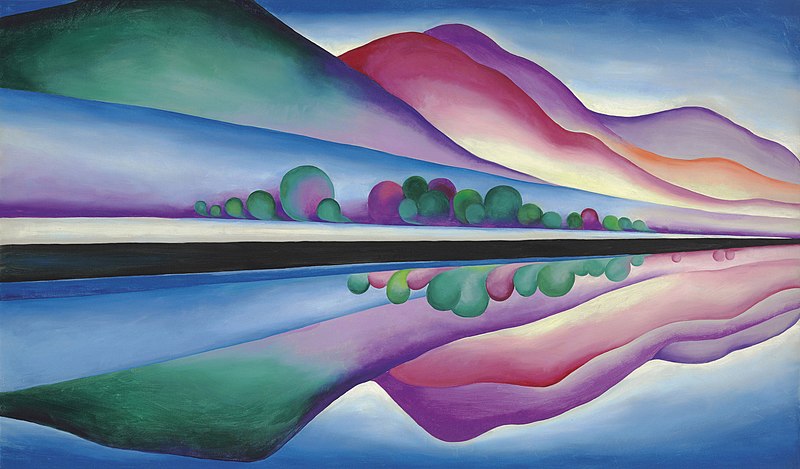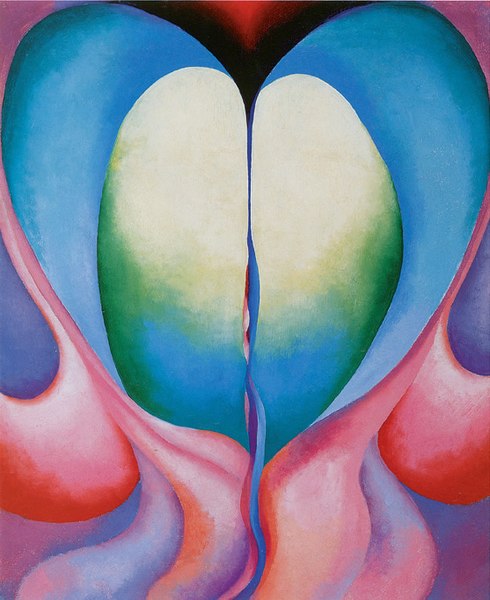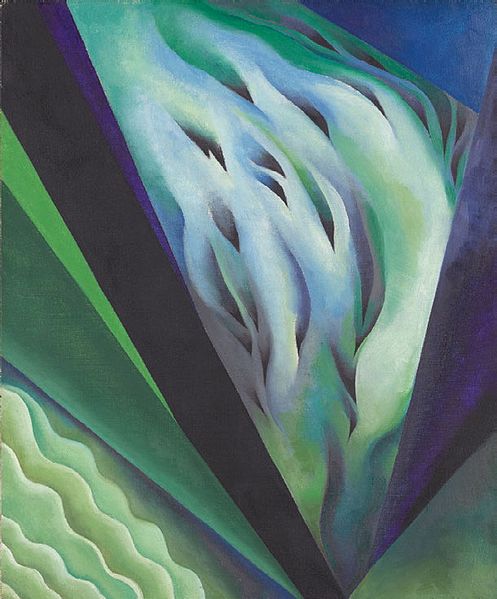6.2 ABSTRACT EXPRESSIONISM
Helen Frankenthaler
Helen Frankenthaler (1928-2011) was a watercolorist who was married to another abstract expressionist artist, Robert Motherwell. She died on December 27, 2011, at the age of eighty-three, the last of the abstract expressionists. In 1951, when she was only twenty-three, she began to soak, or stain, her canvasses with extremely thin paint. The following year, she created Mountains and Sea, a large work that is often cited as her breakthrough work. Frankenthaler commented, “I had always painted on sized canvas, but my paint was becoming thinner and cried out to be soaked. I wanted to draw in with color and shape the totally abstract memory of the landscape.” She combined the influences of Willem de Kooning, Arshile Gorky, Wassily Kandinsky and Jackson Pollock, but she achieved something different. Her influence was felt not just in New York City, but in Washington, D.C., especially in the works of Morris Louis, Kenneth Noland, and Leon Berkowitz. In the spring of 1953 the three painters were among those taken to Frankenthaler’s studio by eminent critic Clement Greenberg. Oddly enough, Frankenthaler was absent, but her soak-stained work pretty much blew everybody away. Morris Louis stated that Frankenthaler was a “bridge between Pollock and what was possible.”1
Like Pollock, she painted with her canvas on the floor instead of on a traditional easel, and she spilled the paint from a coffee can. By guiding the paint as it fell onto the canvases she was able to create shapes that seemed three dimensional even though they were flat. Her methods were a combination of accident, as was sought by the Abstract Expressionists, and the control which allowed the artist to choose the color, the movement of the paint, and the amount of paint applied to the canvas. This method has many of the same effects as watercolor. She stains, dyes and washes the canvas with various layers of color and then turns or manipulates the canvas to cause the paint to move in a certain direction. She employs open composition, frequently building around a free abstract central image. There is no sense of painted texture, which is a general characteristic of color field painting. There is some gradation around the edges of the color shapes, giving these a sense of detachment from the canvas. Often her irregular central motifs float even thought they are a part of the canvas. This gives them a sense of unlimited depth.
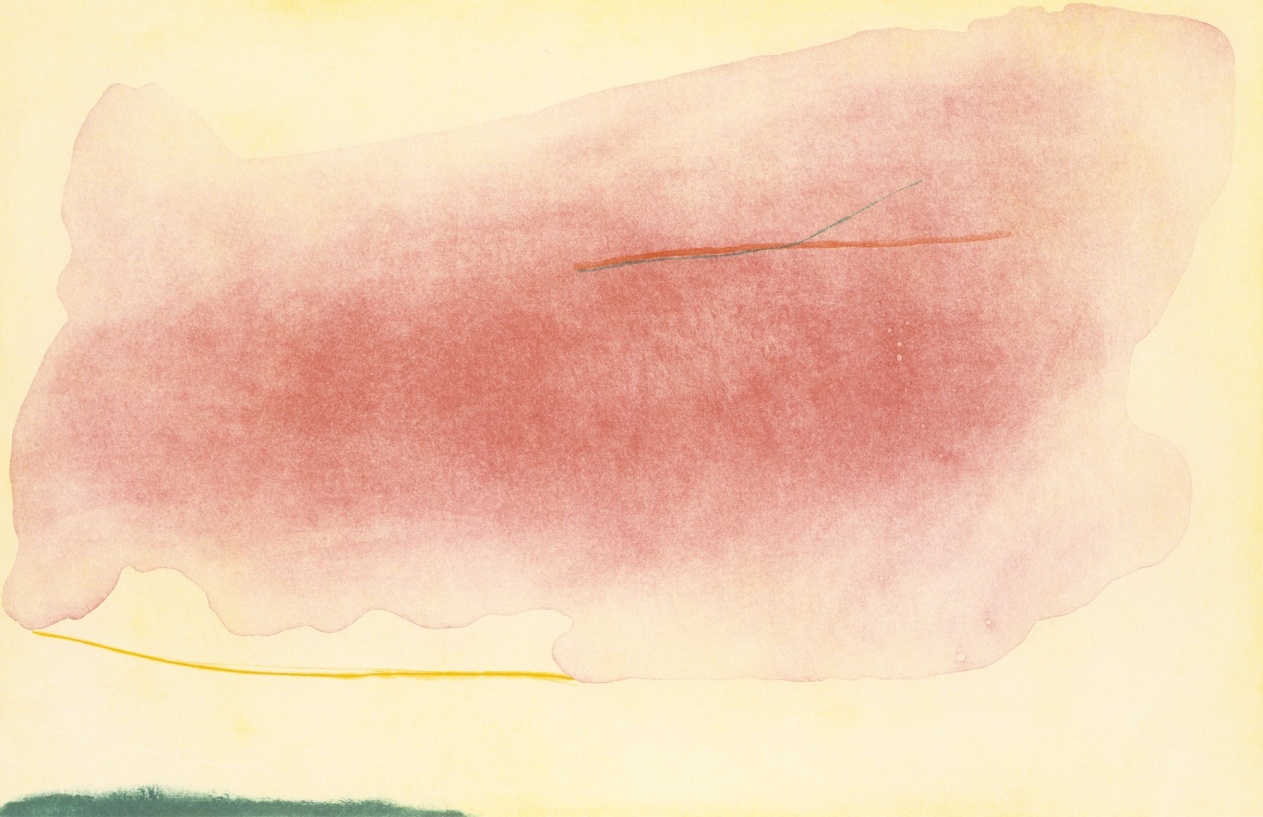
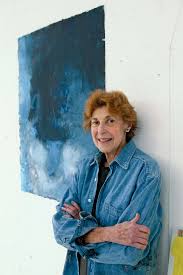
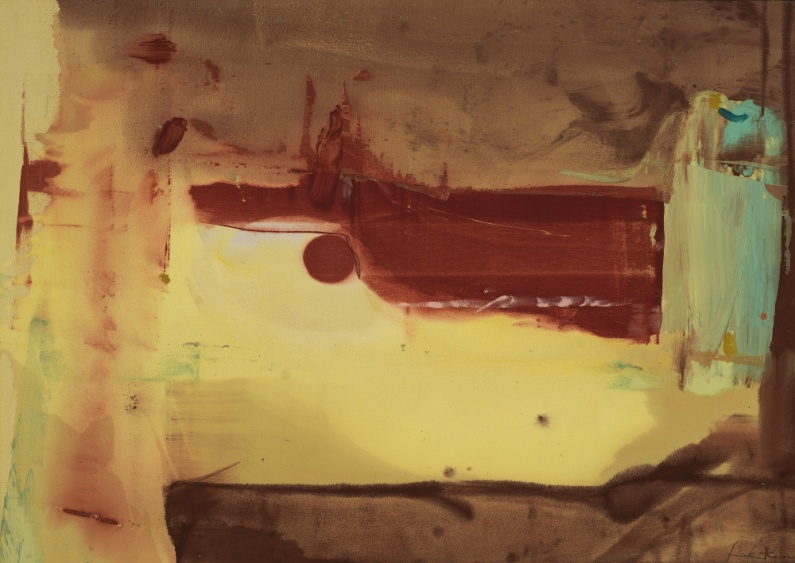
Helen Frankenthaler, Mountains and Sea 4:29
If you receive an error with the link above, use the following link https://www.khanacademy.org/humanities/art-1010/post-war-american-art/new-york-school/v/frankenthaler-sea?modal=1
Jackson Pollock
Jackson Pollock (1912-1956) was raised in the American southwest and was influenced by Native American sand painting. He came from Cody, Wyoming to study at the Art Students League in New York. By 1947 he began to paint in an all over style which was a network of splatters, drips, and lines on large wall sized canvases. These paintings, executed on canvases laid out on the floor, are often associated with the phrase “action painting.” The element of the accidental and the seemingly haphazard plays a large part in his painting process, but these are no accident. He was a part of each canvas. In order to become part of his canvas Pollock invented new painting methods. With the canvas on the floor he could walk around all sides. He used enamel house paint, industrial paint, or paint squeezed directly from the tube. His tools were syringes, turkey basters, cans with holes in the bottom, or house painter’s brushes. His paintings are unified by the selection of colors which dominate and express the intended mood. Patterns were formed which produce fissures or tunnels to create depth and expand the field backward. The inner space adds a new dimension within the painting which draws the viewer in. No segment is the duplicate of another, yet there is balance and harmony.
Pollock was a major influence on the artists which followed. Though no one copied his methods, many ideas were advanced by his originality of thought. He used overall paintings with no beginning or end. His large scale canvases carried Monet’s Waterlilies a step further to a total environment. His works are still copyright protected.
Watch the following short videos to see his work and learn more about them.
Why is that important? Looking at Jackson Pollock 12:00
If you receive an error with the link above, use the following link https://www.khanacademy.org/humanities/art-1010/post-war-american-art/abex/v/why-is-that-important-looking-at-jackson-pollock?modal=1
The Case for Jackson Pollock 11:00
If you receive an error with the link above, use the following link https://www.khanacademy.org/humanities/art-1010/post-war-american-art/abex/v/the-case-for-jackson-pollock?modal=1
Jackson Pollock, Autumn Rhythm (Number 30) 6:48
If you receive an error with the link above, use the following link https://www.khanacademy.org/humanities/art-1010/post-war-american-art/abex/v/jackson-pollock-autumn-rhythm-number-30?modal=1
Paint Application Studies of Jackson Pollock’s Mural 2:00
If you receive an error with the link above, use the following link https://www.youtube.com/watch?v=ECdR_W3Fk4Q
“One: Number 31, 1950”-by Jackson Pollock, 1950, MOMA Education 2:15
If you receive an error with the link above, use the following link https://www.khanacademy.org/humanities/art-1010/post-war-american-art/abex/v/teaching-pollock?modal=1
The Painting Techniques of Jackson Pollock 4:00
If you receive an error with the link above, use the following link https://www.khanacademy.org/humanities/art-1010/post-war-american-art/abex/v/moma-painting-technique-pollock?modal=1
Arshile Gorky
Arshile Gorky (1904-1948) was born in the village of Khorkom, on the shores of Lake Van in present day Turkey. In 1915 he fled Lake Van during the Armenian Genocide and arrived in America in 1920. He was influenced by Impressionism and Paul Cézanne. Gorky showed his work to André Breton in the 1940s, and after seeing the new paintings and in particular The Liver is the Cock’s Comb, Breton declared the painting to be “one of the most important paintings made in America” and he stated that Gorky was a Surrealist, which was Breton’s highest compliment. From 1946, Gorky suffered a series of crises: his studio barn burned down, he underwent a colostomy for cancer, and his wife Mougouch had an affair. In 1948, his neck was broken, his painting arm was temporarily paralyzed in a car accident, and his wife left him, taking their children with her. Gorky hanged himself in Sherman, Connecticut, in 1948, at the age of 44. He is buried in North Cemetery in Sherman, Connecticut.5
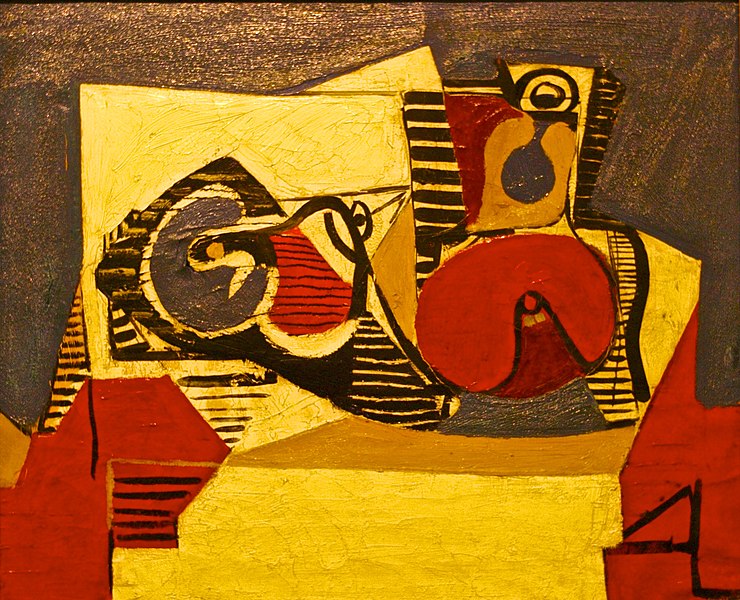
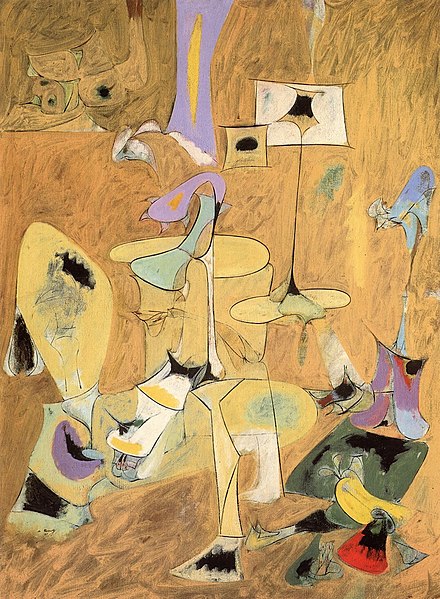
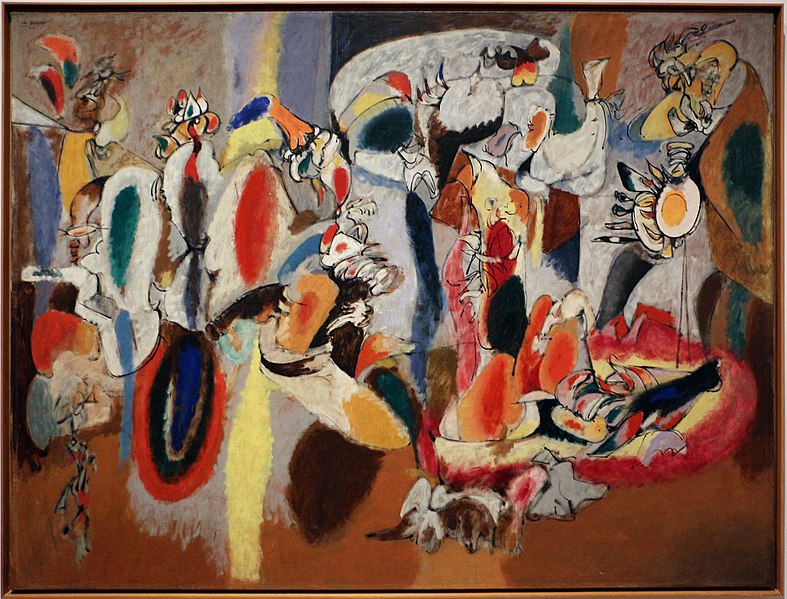
Ad Reinhardt
Ad Reinhardt (1913-1967)was born and raised in New York and was influenced by the cubists and by Piet Mondrian’s de Stijl works. He painted non-representational work and was never interested in painting figures, still life or landscapes. His work was always abstract. He served in the Navy in World War II and spent much of his life teaching. He restricted his early paintings to fewer and fewer colors, and eventually developed a method of extracting what he thought of as pure color from the paint before applying it to his canvas. His late paintings are sometimes called “black paintings”, although with careful observation it is possible to see deep reds, greens, and blues. Look carefully at the black painting below until your eyes adjust and you can see the color variations. Watch the three short video’s below to see his methods and hear more about his ideas.
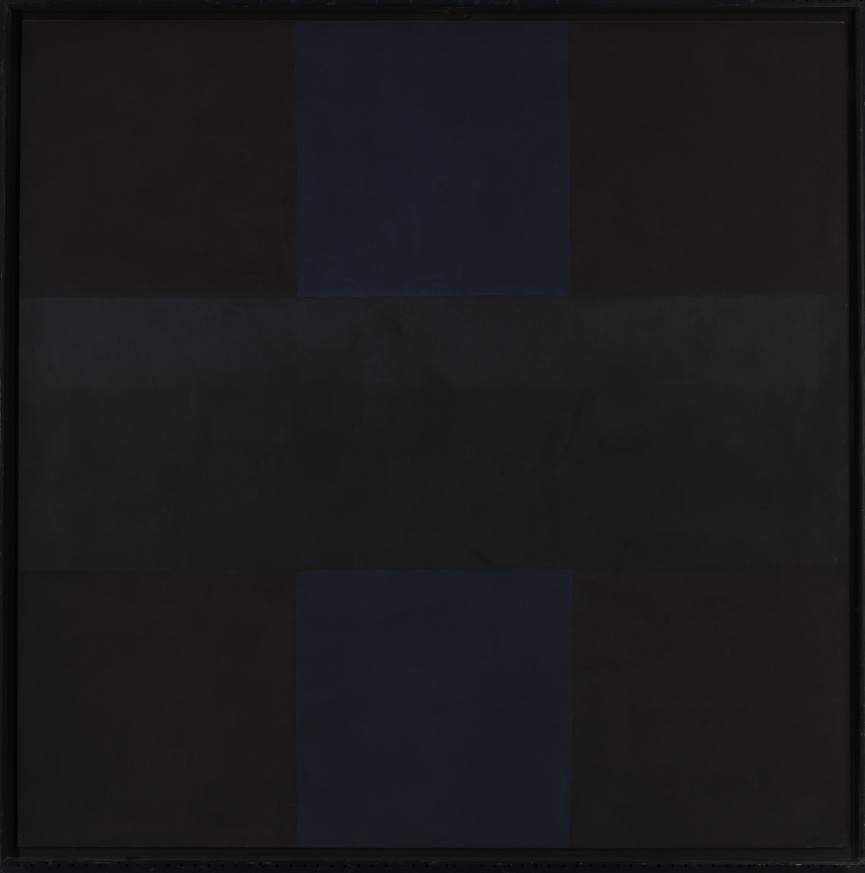
Ad Reinhardt, Abstract Painting 4:34
If you receive an error with the link above, use the following link https://www.khanacademy.org/humanities/art-1010/post-war-american-art/new-york-school/v/ad-reinhardt-abstract-painting-1963?modal=1
Ad Reinhardt 3:23
If you receive an error with the link above, use the following link https://www.khanacademy.org/humanities/art-1010/post-war-american-art?modal=1
The Painting Techniques of Ad Reinhardt 4:58
If you receive an error with the link above, use the following link https://www.khanacademy.org/humanities/art-1010/post-war-american-art/abex/v/teaching-pollock?modal=1
Robert Motherwell
Robert Motherwell (1915-1991) was a painter, a printer, and a maker of collages. He was born in Washington State, studied at Stanford University, then did graduate work at Harvard University and studied in France. In 1949 Motherwell began working on “Elegies to the Spanish Republic” which is a series of paintings and drawings about the horrors of the Spanish Civil War. These are black phallic or egg-like designs on gray-white with few other colors. The edges are rough, like torn paper. He is known as an abstract expressionist and was the organizer of the abstract expressionist movement. He was familiar with the work of Pablo Picasso, Joan Miro, and Georges Braque. Watch the video below to learn more about his work.
Elegy to the Spanish Republic No. 57 4:00If you receive an error with the link above, use the following link https://www.khanacademy.org/humanities/art-1010/post-war-american-art/abex/v/robert-motherwell-elegy-to-the-spanish-republic-no-57-1957-60?modal=1
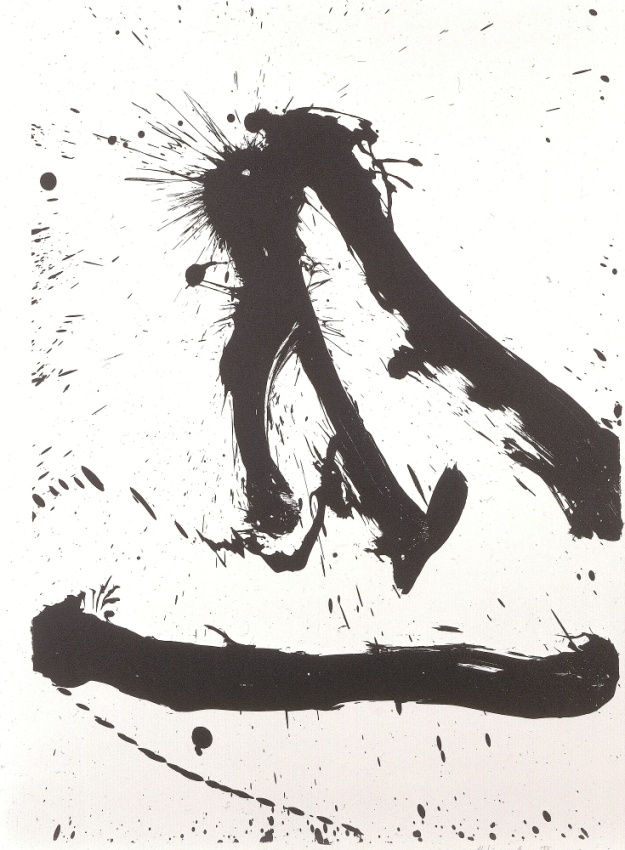
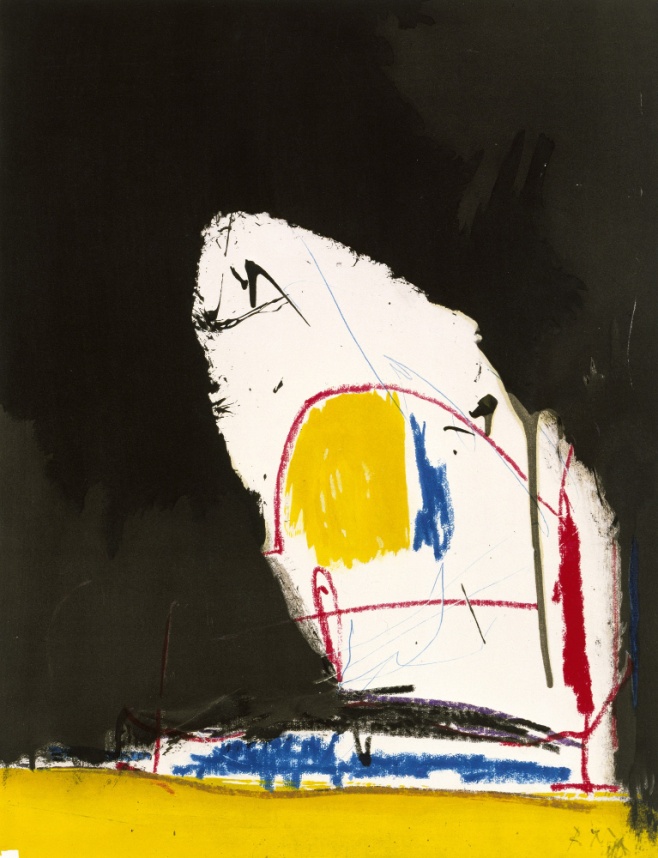
Mark Rothko (1903-1970)
Russian born Mark Rothko was an abstract painter of Jewish descent who came with his parents as immigrants to the United States through Ellis Island in 1913. The family moved to Portland, Oregon and lived with extended family for awhile. Rothko attended Yale University for a time but was not very interested in his studies. He moved to New York in 1923 and became acquainted with many of the abstract expressionists. His early works were influenced by Impressionism and he was not interested in landscapes or painting the urban environment he saw around him. By 1947 Rothko began painting in his mature style which consists of large floating color shapes with loose, undefined edges that give them both a sense of movement and tangible depth. As his style progressed the shapes changed into rectangles floating on a color ground. The oil paint is thinly applied in a wash which creates tonal variations, increases the feeling of depth, and makes his work look like moving, shifting clouds. He painted on a large scale which contributed to his attempts to surround, absorb and engulf the viewer and assimilate him or her into a total color experience. The shapes, which some called “multiforms”, are soft and the shapes seem to float above the surface of the canvas.
Rothko sought to provide a spiritual experience with the colors as they moved forward and backward on the plane. He wanted color to move, and to be balanced on the surface. He wanted the viewer to bring their own spirituality to the experience and to feel the color rather than to just see it. When his works are put on exhibition, he insists that they be placed at the end of a gallery, by themselves on the wall. This contributes to the creation of the atmosphere and the experience. The viewer can feel the color.
He thought his art could convey the religious meanings of the Old Testament. The Rothko chapel, built in Houston, Texas in 1964 to 67 was painted in blacks, plum reds and violets and may represent alienation or annihilation of the self. In 1970 Rothko chose to die. He was the first to abandon the frame and titles for his paintings. Since Rothko’s works are nearly all still under copyright, watch the following video discussions to see his work and to learn more about his painting process.
Rothko, No. 210/No. 211 (Orange) 4:22
If you receive an error with the link above, use the following link https://www.khanacademy.org/humanities/art-1010/post-war-american-art/abex/v/rothko-orange?modal=1
The Painting Techniques of Mark Rothko 3:32
If you receive an error with the link above, use the following link https://www.khanacademy.org/humanities/special-topics-art-history/creating-conserving/how-to-paint/v/moma-painting-technique-rothko
If you receive an error with the link above, use the following link https://www.khanacademy.org/humanities/art-1010/post-war-american-art/abex/v/the-case-for-mark-rothko?modal=1
Mark Rothko’s No. 3/No.13 5:11
If you receive an error with the link above, use the following link https://www.khanacademy.org/humanities/art-1010/post-war-american-art/abex/v/mark-rothko-no-3-no-13-1949?modal=1
Georgia O’Keefe
Georgia O’Keefe (1887-1986) was born in Wisconsin and lived there until she was twelve. Her family raised corn, but she and her six siblings spent the winter months listening to music and practicing their painting and drawing skills. They moved to Virginia and at age seventeen she attended the Chicago Art Institute. By 1907 she went to New York and studied at the Art Students League where she became acquainted with the artists of the time, and especially Alfred Stieglitz. In 1916 he exhibited her work and they became close friends. They were married in 1924 and Stieglitz took hundreds of photographs of Georgia and exhibited her paintings in his studio, called “Studio 291”, which was its street address. During the years she lived in New York and other big cities she painted cityscapes, often expanding recognizable objects out of proportion and bathing them in unusual light. Since the big cities might not have much natural light, she focused on how artificial light looked on windows and human made objects. She was likely influenced by the photography of Stieglitz and others and felt that a painter, like a photographer, could “seize a moment in time and fix it on film. Photographic perspectives and pictorial components such as light reflections thus became the creative design elements through which O’Keefe gave expression to her romantic feeling for the metropolis.”12
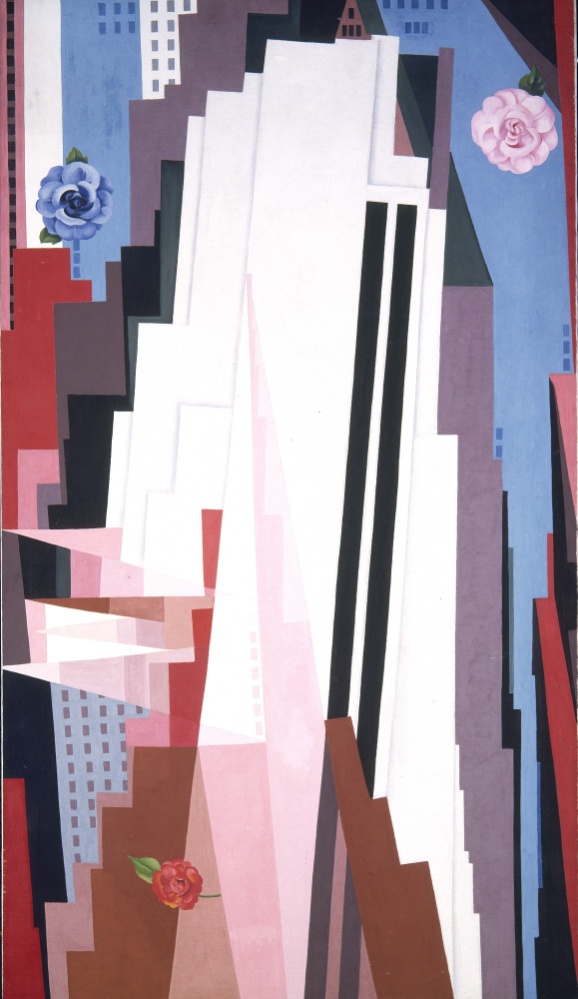
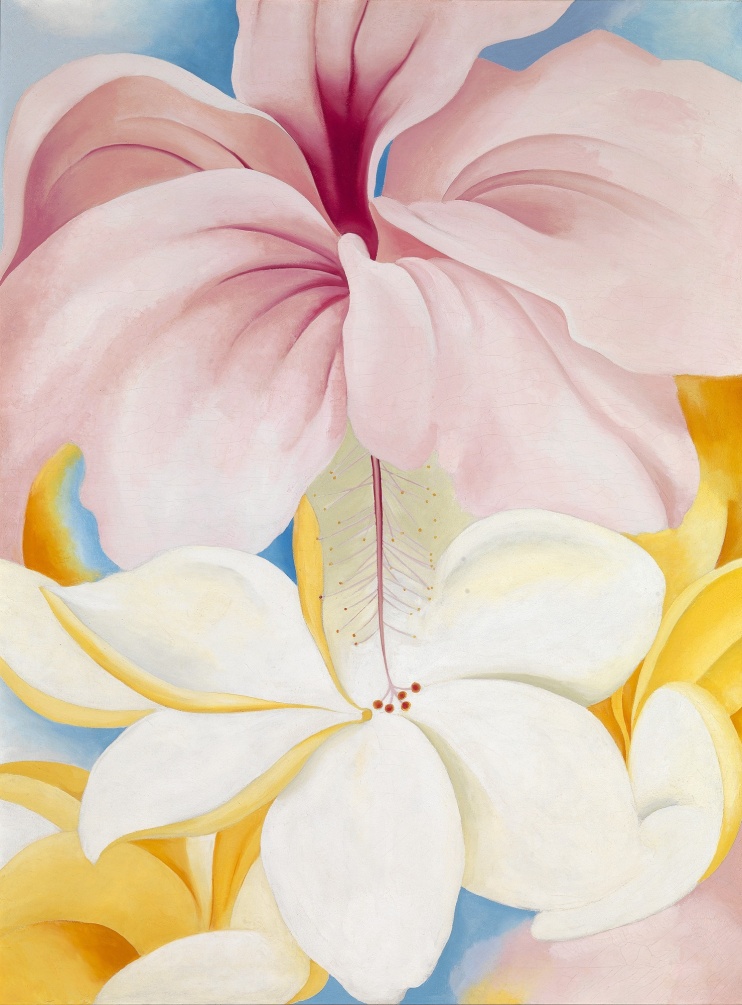
O’Keefe is well known for her images of flowers that take up her entire canvas. She painted many versions of Calla Lilies, Jack-in-the-Pulpit, Poppies, Irises, and Roses. In 1929 O’Keefe visited her friend Mabel Dodge Luhan in Taos, New Mexico and was impressed by the high desert landscape and its intense light. From that time forward she spent some time in the southwest every year and in 1949 she moved there. Many of her works show the light and shadow and natural forms of the desert southwest. She painted the bleached animal bones, adobe buildings, mountains, and flowers of New Mexico. Although her flowers look like real flowers, their over large size, cropped petals, sensuous color, and placement on the canvas make them and much of O’Keefe’s work abstract, and so we place her with the abstract expressionists.
